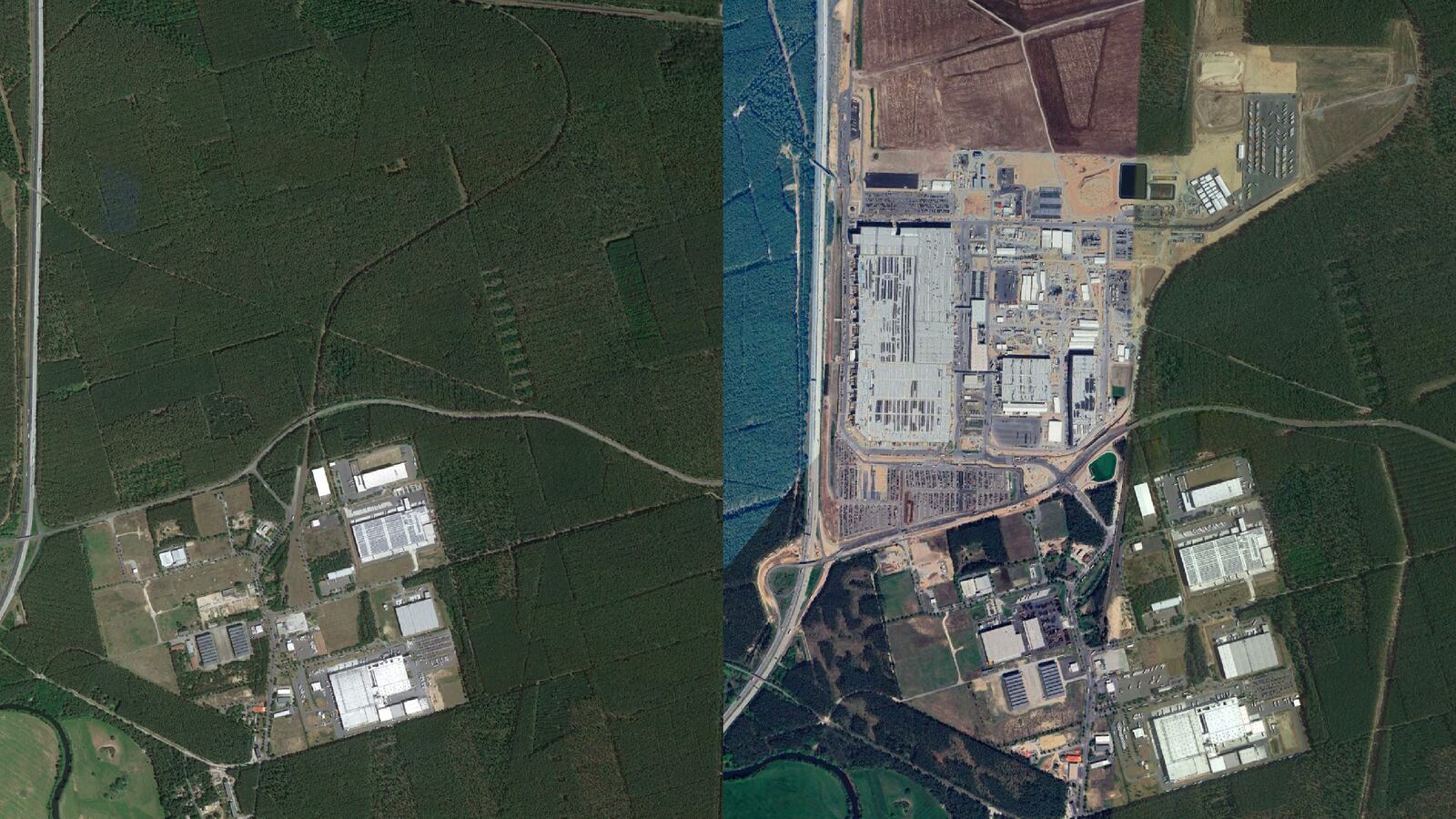Elon Musk’s new Tesla Gigafactory just outside of Berlin, Germany, has led to some 500,000 trees being chopped down since construction began in 2020, according to satellite analysis done by the environmental intelligence agency Kayrros.
Antione Halff, a chief analyst at Kayrros, told the Daily Beast that the amount of trees chopped down increased carbon emissions by 13,000 tons, the equivalent of driving 33 million miles in a combustion car, or keeping 3,000 cars running for a year, according to the EPA.
The satellite images produced by Kayrros show 813 acres of forest were felled between 2020, when construction began and May 2023 when it concluded.
“There have been many, many instances of greenwashing in recent years,” Antoine Rostand, president and co-founder of Kayrros told the Daily Beast in an emailed statement. “The public are rightly suspicious of any kind of ‘green’ claims made by big, powerful companies... satellite imagery alone can tell us who is telling the truth.”
The Daily Beast reached out to Tesla for comment but has yet to receive any at the time of publishing.
A sustained environmentalist campaign against the factory resulted in nearly 800 protestors storming the plant in May. Locals in Grünheide have been peeved by it too, vetoing a planned expansion of the plant in February, although only ceremonially, citing the 1.8 million cubic meters of water the plant would suck up.
The local government instead allowed the plant to expand.
The main organization opposed to the Gigafactory, Citizens’ Initiative Grünheide, concurred with the Ecological-Democratic Party’s analysis that Tesla did not receive the environmental approvals to build the site and the documents it did submit “contain formal and technical deficiencies from which no reliable statements can be made about environmental risks and impacts.”
“In one of the driest regions in Germany, too much of the environment has already been destroyed,” Karolina Drzewo, a member of Turn Off Tesla’s, Tap, told The Guardian. The Citizens’ Initiative claimed in their same initial objections that the site was being “built in a drinking water protection area.”






